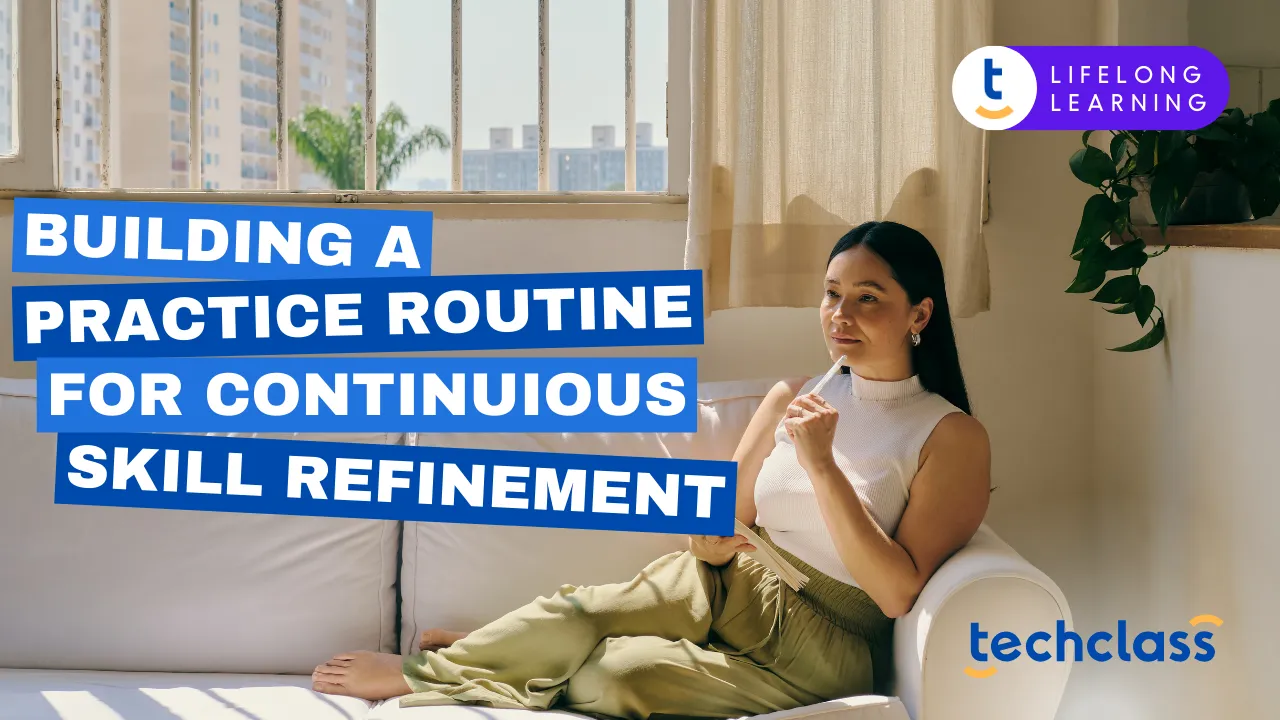
Whether you're learning to play the guitar, sharpen your public speaking, or master data visualization, the secret to sustained skill improvement lies in one essential principle: deliberate and consistent practice. Mastery isn’t a one-time event, it’s a continuous journey. Building an effective practice routine is the cornerstone of refining any skill. Let’s explore how to design a routine that not only supports steady growth but makes that growth sustainable and rewarding.
It might feel more productive to set aside a big chunk of time once a week to focus on your skill. But neuroscience shows otherwise. Short, daily practice sessions are more effective than infrequent, long sessions. This is thanks to our brain’s ability to adapt through repetition, a concept called neuroplasticity.
Each time we practice, we strengthen the neural pathways associated with the task. Frequent repetition builds stronger, more lasting connections. Moreover, taking breaks during practice enhances learning, as the brain replays the skill internally, reinforcing progress even when you’re not actively working.
Benefits of shorter, regular sessions include:
To make practice more productive, break the skill into its component parts. Great communicators, for example, don’t just speak well—they listen attentively, use storytelling techniques, and manage their pacing. Likewise, a skilled golfer masters individual shots before executing a complete round seamlessly.
You can apply two approaches:
True progress happens when we step slightly beyond our comfort zones. Practicing the same routine in a comfortable environment might feel good, but it doesn’t stretch your ability. Neuroscience suggests there's a "sweet spot" of challenge where learning thrives, just enough stress to activate growth, without tipping into overwhelm.
To reach this state:
This deliberate discomfort nudges your brain into a focused, adaptable learning mode.
Fun fuels motivation and consistency. Our brains are wired to enjoy learning when it’s gamified or engaging. You don’t need fancy badges or reward systems; often, the most effective games are the ones you invent yourself.
Make use of tools to track and enhance your routine:
Turning practice into a game removes monotony and fosters creativity.
Feedback is the mirror that shows you where to grow. Elite athletes and performers rely on constant feedback—so should you.
Build your own feedback ecosystem:
Feedback doesn’t have to be external. Self-assessment, when done honestly, is a powerful tool for course correction and motivation.
The magic ingredient in any effective practice routine? Persistence. Building skills is a long-term endeavor, and routines ensure you stay on track when motivation dips.
Tips for staying consistent:
Every routine needs a reset occasionally. Review your goals and progress monthly to ensure you're on the right trajectory.
There’s no one-size-fits-all formula for mastering a skill—but what’s universal is the need for consistency, intention, and adaptability. A solid practice routine isn’t about grinding endlessly or aiming for perfection overnight. It’s about committing to steady progress, fueled by curiosity, resilience, and a willingness to refine your process along the way.
Think of your routine as a living system—something that evolves with your goals, grows with your ability, and adapts to your life’s rhythms. Some days will feel easier than others, and that’s normal. What matters most is showing up regularly, learning with purpose, and enjoying the process.
You don’t need 10,000 hours to get started—you just need today. Begin with a few focused minutes, one small improvement, one meaningful repetition. With time, those moments compound into mastery. Keep practicing. Your future self will thank you.


.webp)